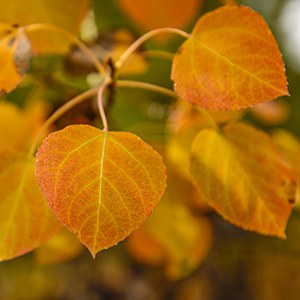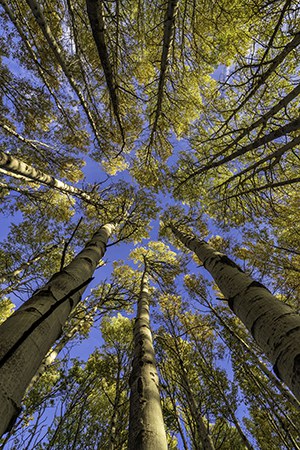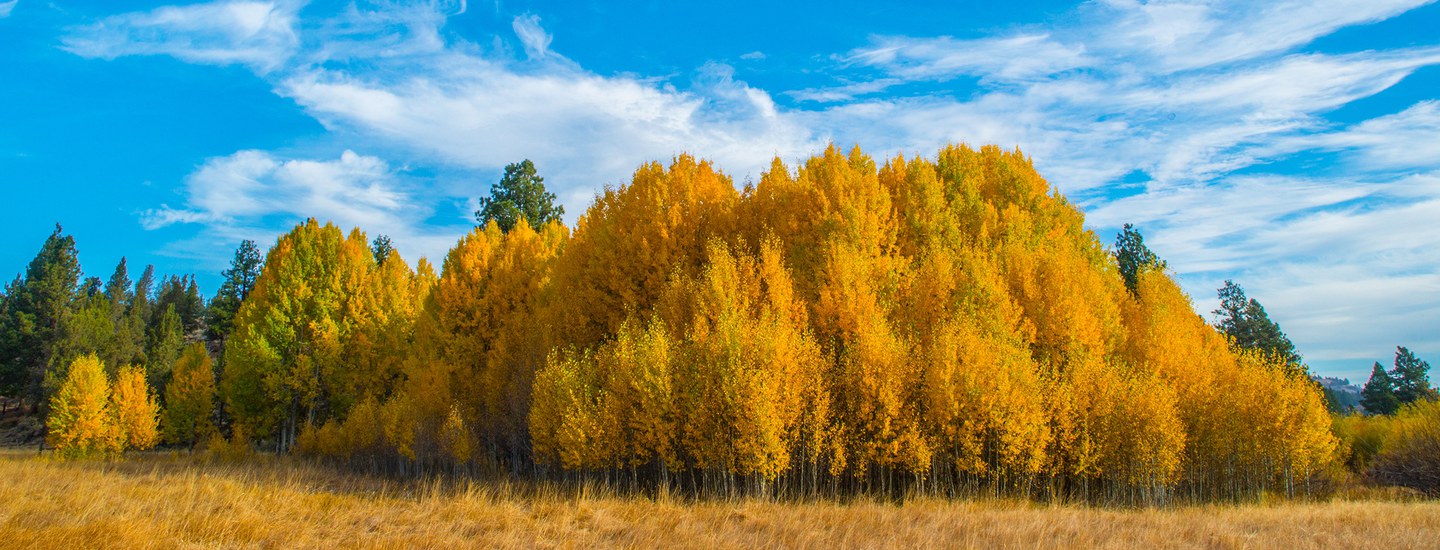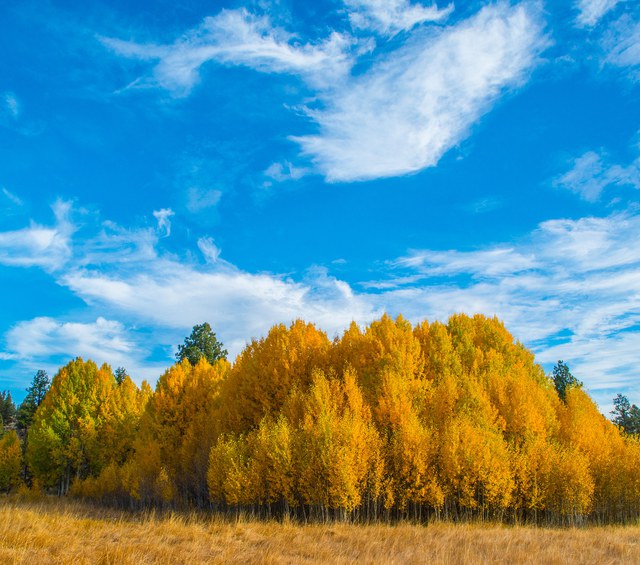Every fall the aspen trees of Central Oregon light up the forest with their brilliant changing colors. There’s just something about their stark white bark, round yellow and orange leaves, and delicate quaking sound that is so enchanting. But, did you know that aspens are more than your average tree? They provide year-round benefits to wildlife and people.
Aspen and aspen stands are used by a wide range of wildlife and are considered biological hotspots—places rich in biological diversity. Their dense thickets provide cover and hiding spots for calving deer and elk. Woodpeckers use aspen trunks to create nesting cavities. Songbirds, bats, beaver, black bear, and other wildlife nest and forage in aspen stands. In the winter, aspen stands provide warmer locations for wildlife to escape wind, snow and extreme cold.
Aspen trees also play an important role in our water cycle. Their dense shady stands collect and store snowpack longer than surrounding conifer stands. In the winter and spring, aspen slowly release their snowpack stored in these shady groves adding cool water into our streams and groundwater. This is especially important for communities that rely on snowmelt for their water supply.
Aspen trees like disturbance and are good at colonizing a site after something like a fire moves through the forest. While the mature trees with their thin bark will often die in a fire, the roots below ground remain and will re-sprout in abundance. According to the US Forest Service, as many as 50,000 to 100,000 can sprout on a single acre after a fire!
Finally, climate change is one of the biggest threats to aspen. The ongoing intense drought and lack of precipitation in the West stresses these moisture-loving trees, making them more susceptible to insects and other diseases. That’s why local land stewards like the Forest Service and Deschutes Land Trust are working to conserve and restore the aspen stands we have today, so they can thrive and hopefully adapt to a climate changed future. Aspen restoration includes reintroducing fire where appropriate or removing encroaching conifers to let in more sunlight. Aspen caging or fencing also helps limit the intense browsing so young aspen can grow strong.
So, this fall when you are out and about enjoying the changing colors, be sure to take some time to appreciate all that aspens offer to the natural world. Their stunning yellows and oranges are only the tip of the iceberg!
This story first appeared in the Source Weekly.
Learn more:
- Protecting aspens at Indian Ford Meadow Preserve.
- Oregon Conservation Strategy for Aspen Woodlands
- Land Manager's Guide to Aspen


